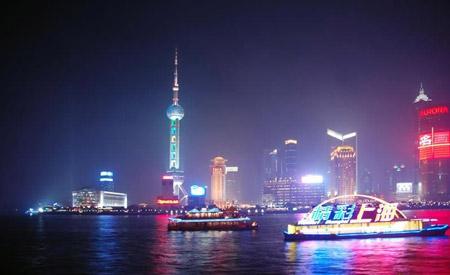The Bund
2010-01-19 14:20 BJT
Located along the Huangpu River, the Bund shows off Shanghai’s outstanding foreign buildings, most of which were erected before 1937. To the Europeans, the Bund was Shanghai’s answer to Wall Street. In the 1930s, the string of buildings hosted the city's financial and commercial centers, and the world's greatest banks and trading empires established a base here.
 |
| The Bund |
“The Bund” was derived from the Anglo-Indian term that literally means “a muddy embankment.” At the beginning of the 19th century, the area was a mere shallow waterfront covered with reeds.
At the northwestern end of the Bund was Huangpu Park (once called British Public Gardens). More of a pedestrian walkway than a conventional park, this area was also under the control of the Brits. It was forbidden territory to Chinese people for years, unless they were accompanying employers. Today, the park is free and open to everyone; it is a well-maintained walkway providing excellent views over the river to Pudong and down the river to the old Customs House and other colonial relics.
On the west side of the Bund are various towering buildings of different architectural styles, including Gothic, Baroque and Romanesque. The combination of these structures creates a unique boulevard that resembles the Liverpool Docks and 1920s New York City.
Today, the Bund is in the process of another transformation. The building, identified by a crowing dome, is the old Hong Kong & Shanghai Bank, which was completed in 1921. For many years it has housed the Shanghai People’s Municipal Government. The statues that once lined the Bund no longer exist. The pair of bronze lions that once stood outside the Hong Kong & Shanghai Bank are now housed at the Bund History Museum.

 Mail
Mail Share
Share Print
Print


 Video
Video









 2009 China Central Television. All Rights Reserved
2009 China Central Television. All Rights Reserved